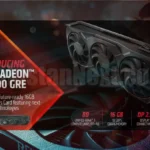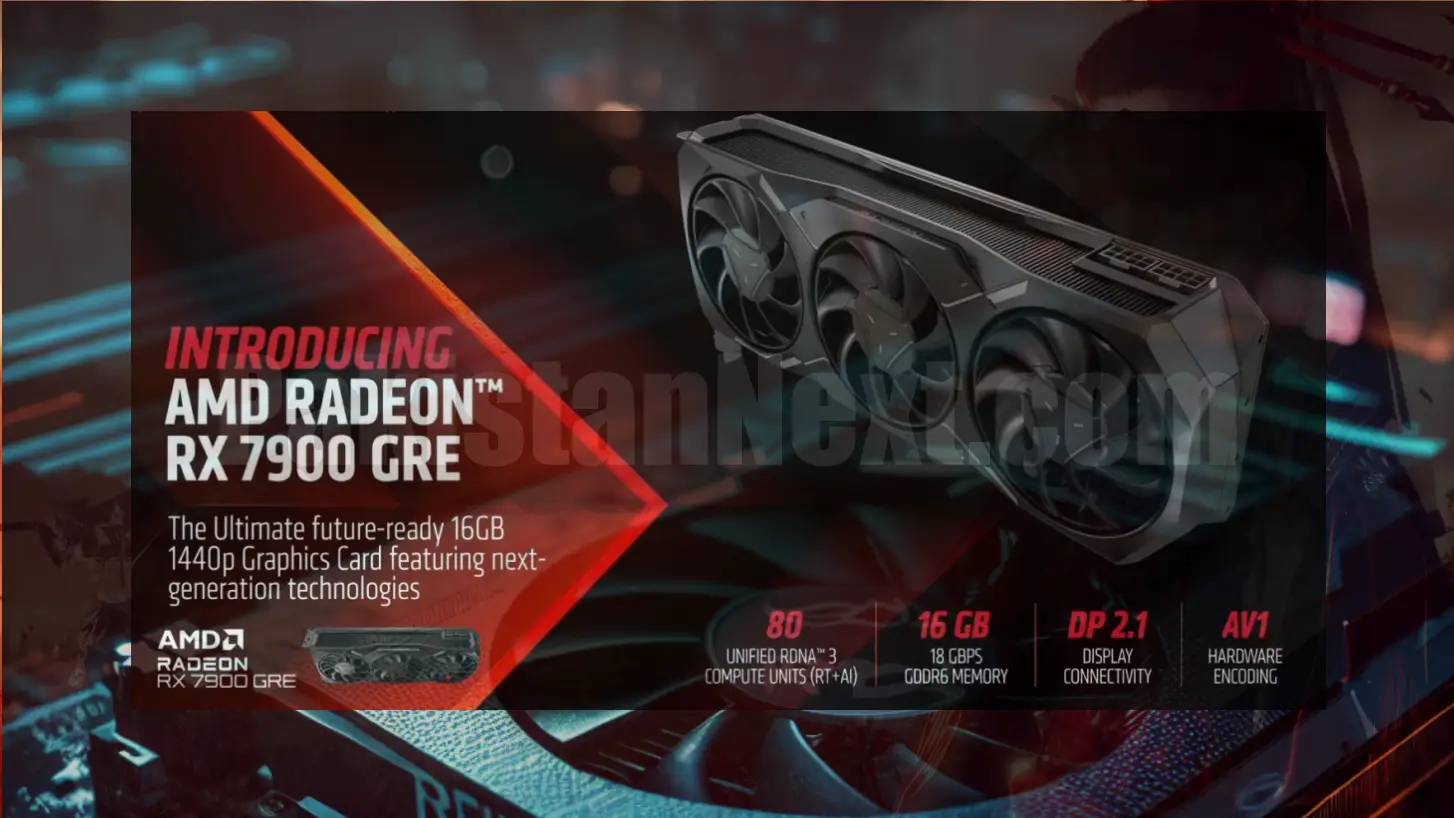The Radeon RX 7900 GRE desktop GPUs were unveiled by AMD today. Despite being initially introduced in China, it appears that the card will also be offered internationally.
The RX 7900 GRE, or Golden Rabbit Edition, is a scaled-down version of the RX 7900 XT that has both large and modest RAM and GPU reductions.
Radeon RX 7900 GRE is unveiled by AMD in China.
The 7900 GRE has 80 compute units as opposed to the 84 of the 7900 XT. Downshifting from 2000MHz to 1880MHz is the game clock. The memory bandwidth decreases from 800GB/s to 576GB/s when the 20GB 20Gbps 320-bit memory is reduced to 16GB 18Gbps 256-bit. Additionally, the Infinity Cache was shrunk from 80MB to 64MB. The board’s authority has decreased from 315W to 260W.
Instead of marketing the 7900 GRE as a 4K card, AMD sees it as a 1440p card. Additionally, it is positioned as the 6800 XT’s replacement in the company’s marketing materials, which clearly contrast the two. As a result, its performance ought to be comparable to that of the RTX 4070.
Radeon RX 7900 GRE is unveiled by AMD in China.
The 7900 GRE is offered by AMD for 5299 RMB in China and $649 in the US. It will be offered by PowerColor, Sapphire, and XFX and will also be compatible with the AMD standard model. On July 28, the product went on sale in China; however, it is unknown when it will be made accessible internationally or if it will bear the same name.
AMD has recently launched a new graphics card in China, the Radeon RX 7900 GRE, which stands for Golden Rabbit Edition. This card is based on the RDNA 3 architecture and features a cut-down version of the Navi 31 GPU, which is also used in the flagship Radeon RX 7900 XT. The RX 7900 GRE is designed to compete with NVIDIA’s RTX 4070, offering similar performance at a lower price point.
The RX 7900 GRE contains 160 AI accelerators, 160 ray accelerators, 5120 stream processors, and 80 compute units. It features a boost clock that can go up to 2245 MHz, a game clock of 1880 MHz, and a base clock of 1270 MHz. It has 16 GB of GDDR6 memory that operates at 18 Gbps on a 256-bit bus, giving it a 576 GB/s bandwidth. Additionally, it contains 64 MB of Infinity Cache, a fast on-die cache that lowers power use and memory latency. The card needs two 8-pin power connections and has a total board power of 260 W.
The RX 7900 GRE supports DirectX 12 Ultimate, Vulkan, and AMD’s own software features such as FidelityFX Super Resolution, Noise Suppression, Radeon Boost, Anti-Lag, Image Sharpening, Enhanced Sync, FreeSync, Chill, and Virtual Super Resolution. It also supports HDMI 2.1 and DisplayPort 2.1 for high-resolution and high-refresh-rate displays. The card has a USB Type-C port for VR headsets and monitors that support this interface.
The RX 7900 GRE is priced at $649 USD, which is $100 less than the RTX 4070. However, the availability of the card is limited to China for now, and only three board partners are producing custom models: Sapphire, PowerColor, and XFX. AMD has not announced any plans to release the card in other markets yet.
According to some benchmarks conducted by Chinese media outlets, the RX 7900 GRE performs slightly worse than the RX 7900 XT, but better than the RTX 4070 in most games. The card can handle 1440p and even some 4K gaming with ray tracing enabled, thanks to its advanced AI and ray tracing capabilities. AMD claims that the card is the successor to the RX 6800 XT, which was one of the best-selling cards in the previous generation.
The RX 7900 GRE is an intriguing addition to AMD’s RDNA 3 family, giving gamers who want to take advantage of the newest innovations and games at high settings a more cheap choice.Additionally, the card has AMD’s hybrid Navi design5, which combines two distinct GPU dies into a single chip. Future Navi GPUs, such the reported Navi 32 and Navi 33, may also employ this architecture.











